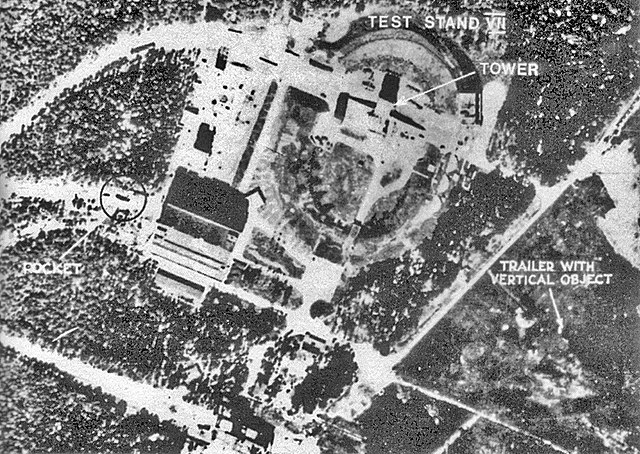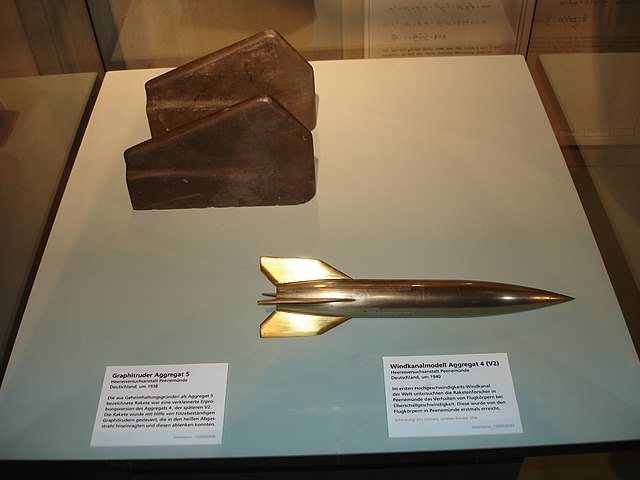Peenemünde Army Research Center
The Peenemünde Army Research Center was founded in 1937 as one of five military proving grounds under the German Army Weapons Office (Heereswaffenamt). Several German guided missiles and rockets of World War II were developed by the HVP, including the V-2 rocket. The works were attacked by the British in Operation Crossbow from August 1943, before falling to the Soviets in May 1945.
1943 RAF photo-recon of Test Stand VII at the Peenemünde Army Research Center
A launchpad at Peenemünde as depicted in a miniature at the Deutsches Museum
V-2 launch in Peenemünde (1943)
V2 in the Peenemünde Museum
The V2, with the technical name Aggregat 4 (A4), was the world's first long-range guided ballistic missile. The missile, powered by a liquid-propellant rocket engine, was developed during the Second World War in Nazi Germany as a "vengeance weapon" and assigned to attack Allied cities as retaliation for the Allied bombings of German cities. The V2 rocket also became the first artificial object to travel into space by crossing the Kármán line with the vertical launch of MW 18014 on 20 June 1944.
Peenemünde Museum replica of V2
Wernher von Braun at Peenemünde Army Research Center.
Wind tunnel model of an A4 in the German Museum of Technology in Berlin.
Layout of a V2 rocket.







